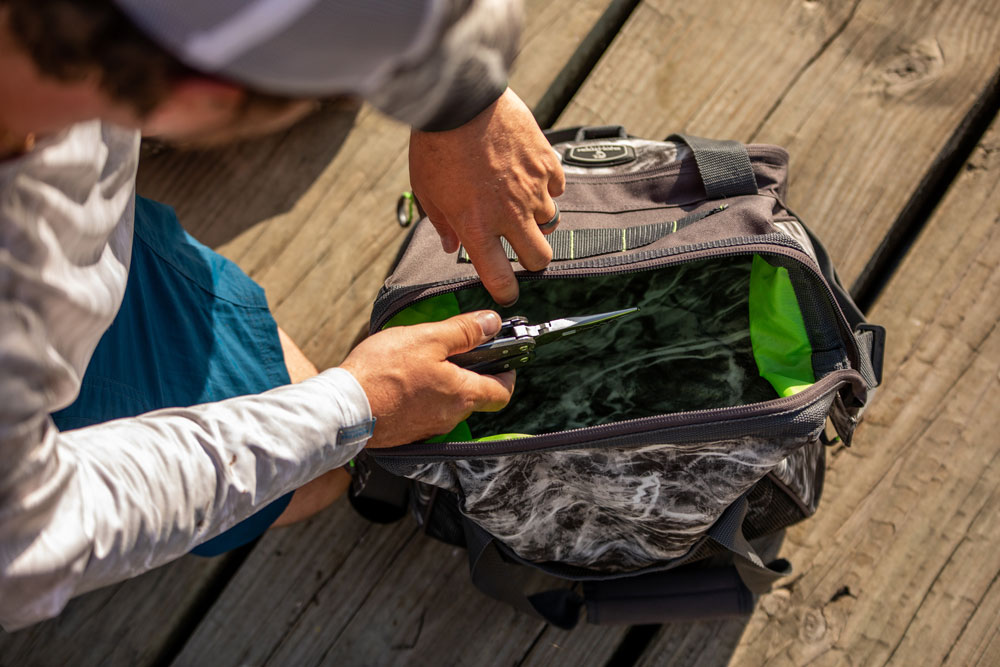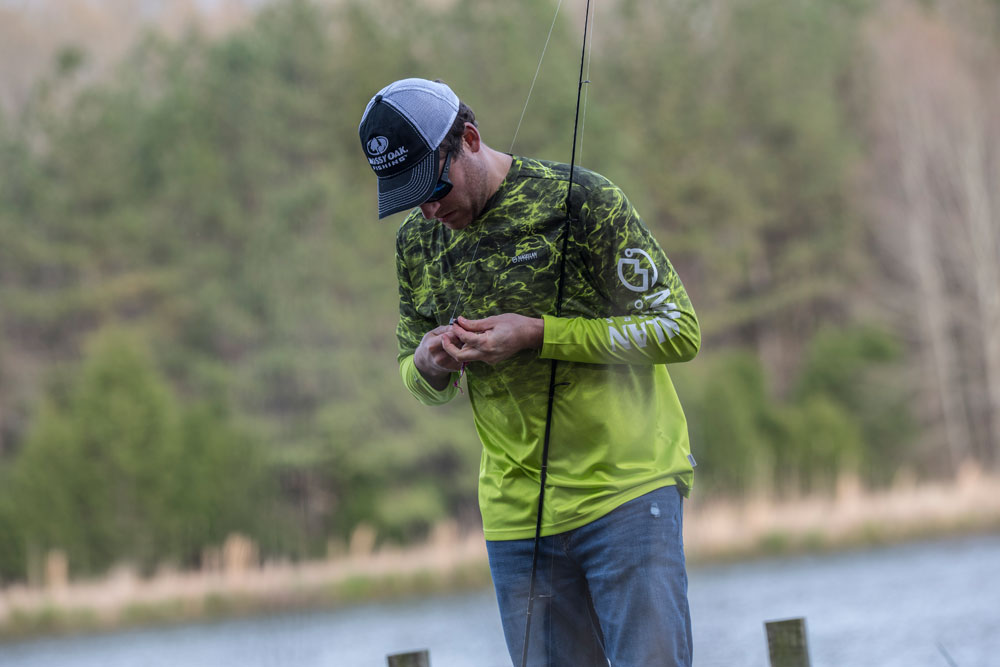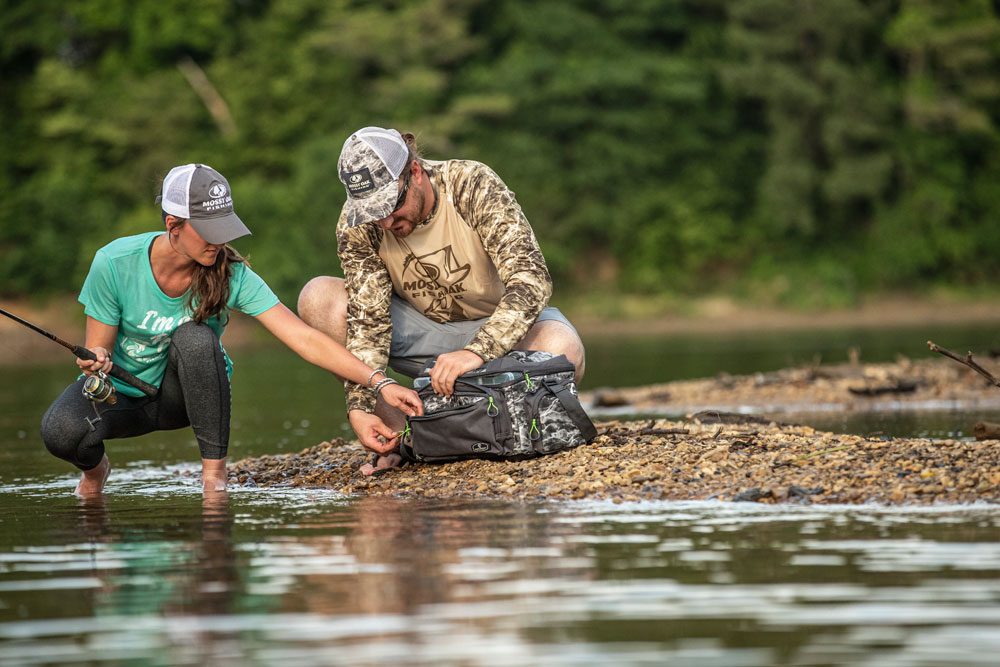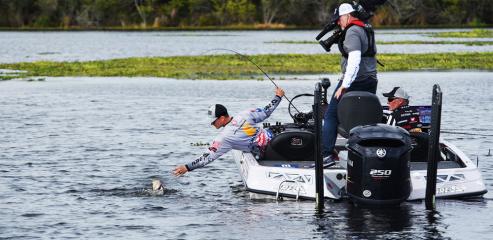Your tackle box is one of the most essential pieces of equipment you'll bring on your fishing trips, other than your rod and reel. With a well-stocked tackle box, you have a solution to the most common problems anglers encounter.
Fishing is a peaceful pastime that lets you commune with nature as you let go of your week's stresses. You don't want to be caught out without a swivel or a spinner next time you're on the river.

The Pole
Before you stock up on your essentials in your tackle box, you need to know how to pick the right fishing pole. Fishing poles are tools, and each one offers a different array of benefits and disadvantages.
Sometimes you need a pole with a stout backbone if you're flipping a jig, so you have enough spring to yank a fish out of the water. Other times, you need a rod that can withstand shocks and jarring motions. The longer the rod, the longer the distance it will cast, but you also want to match the rod's action and power to its length.
Once you have the correct height, strength, and action, set your sights on what you keep in your tackle box. Here are eight tips every newbie should know when outfitting their tackle box:
1. Must-Have: A Fishing License
This item is undoubtedly the most important of all your tacklebox items. Always have your fishing license on your person when you're out on the water. You can even keep a plastic sleeve in your tackle box so that, in the event of accidental submersion, it won't get wet.
2. Stock Up on Extra Line
One of the most crucial pieces of equipment that you can carry in your tackle box is extra fishing line. Before you can stock up on tackle, however, you need to choose the right fishing line for your rod, your reel, and the fish you're planning to catch.
There are three basic types of fishing line—braided, monofilament, and fluorocarbon. Most anglers use fluorocarbon line if they’re going after bass, even though it isn't always the most natural type of line with which to work. It twists easily, and it's not as supple as monofilament. It is invisible to the fish, however, and so offers a lot in terms of stealth.
Many anglers find success by tying a braided line to the fluorocarbon to create an ultra-strong, thin line. If all else fails, monofilament can suit you just fine.
Although more visible than the other two types of line, monofilament is forgiving and durable. It has the stretch you need to reel in some of the biggest bass, but it isn't as pliable as a braided line.
To make sure you don't snap a line and need to forgo the rest of your day's fishing because you didn't bring any extra, stock your tackle box with some line that's appropriate to the conditions and your prey.
3. Carry Extra Hooks
Once you've chosen and stocked your line, turn your attention to what you tie on the end of it. Hooks, bobbers, and sinkers come in a wide variety of shapes, sizes, colors, and weights. Each is specially designed for a particular kind of fish and a specific range of conditions.
Store different-sized hooks in your tackle box so you always have what you need. You don't want to find yourself trolling for a hundred-pound catfish with a size 32 hook. Even if you have a particular favorite, like the French hook or the J-hook, bring a variety so you can match your fish to your hook.

4. Bring Bobbers
Bobbers are used to keep your hook and line on the surface of the water; as their moniker implies, they bob. They're also known as floaters.
Most people know the plastic, classic, red-and-white bobbers, but you can also stock your box with a slip bobber, which lets you slide it up and down your line. These take longer to rig, but many anglers think this bobber's versatility makes up for it.
If you are really in a bind, a cork with a stick through it is a tried-and-true way to keep your hook afloat.
5. Don't Forget the Sinkers
Sinkers are the opposite of bobbers; they pull your hook down into the water.
A hook and line on their own don't have enough weight to sink underwater, so you have to attach a sinker to get them to where the fish are biting. Most sinkers were made of lead in the past, but, due to health concerns, many states are outlawing their usage.
Lines snap, and hooks, bobbers, and sinkers are lost to the waves and the currents. Keep plenty of extras on-hand so you don't have to cut your trip short.
6. Stock Up on Swivels
Swivels have a ton of uses: They help keep your line untwisted, they make tying complex rigs like the Carolina or a three-way jig a breeze, and they also make swapping out your lures easy. Grab a pack from your tackle shop. You'll be surprised at how often you use them.
7. Bring Some Spinners, Hard and Soft Bait
It’s a good idea to bring something to attract the fish into biting your hook, so keep a portion of your tackle box reserved for bait. You can bring hard bait in the form of lures. Like the hooks, stock a few different kinds to tailor your lure to your prey.
Soft bait in the form of rubber worms or grubs also makes excellent fish attractant. Some consider soft bait to be strictly relegated to bass fishing, but others have found that rubber bait is irresistible to any underwater creature.
8. Tools
You can bring as many devices as you'd like, but weight is always a consideration, whether you're fishing from a boat or hiking to your spot. The four crucial pieces of gear that help you on a fishing trip are a pair of needle-nosed pliers, a sharp knife, a nail clipper, and a first aid kit.
The pliers help you bend and twist the metal components of your gear, a knife helps you gut your fish, and a nail clipper handily snips through line. A first aid kit is essential on any backcountry trip, but especially one that includes knives, hooks, and flailing fish, some with teeth.

Fishing is one of the most relaxing pastimes. To excel, you need technical prowess, experience, and excellent observational skills. You also need gear.
A necessity for all anglers, your tackle box is a crucial part of your gear, besides your rod, line, and reel.



























